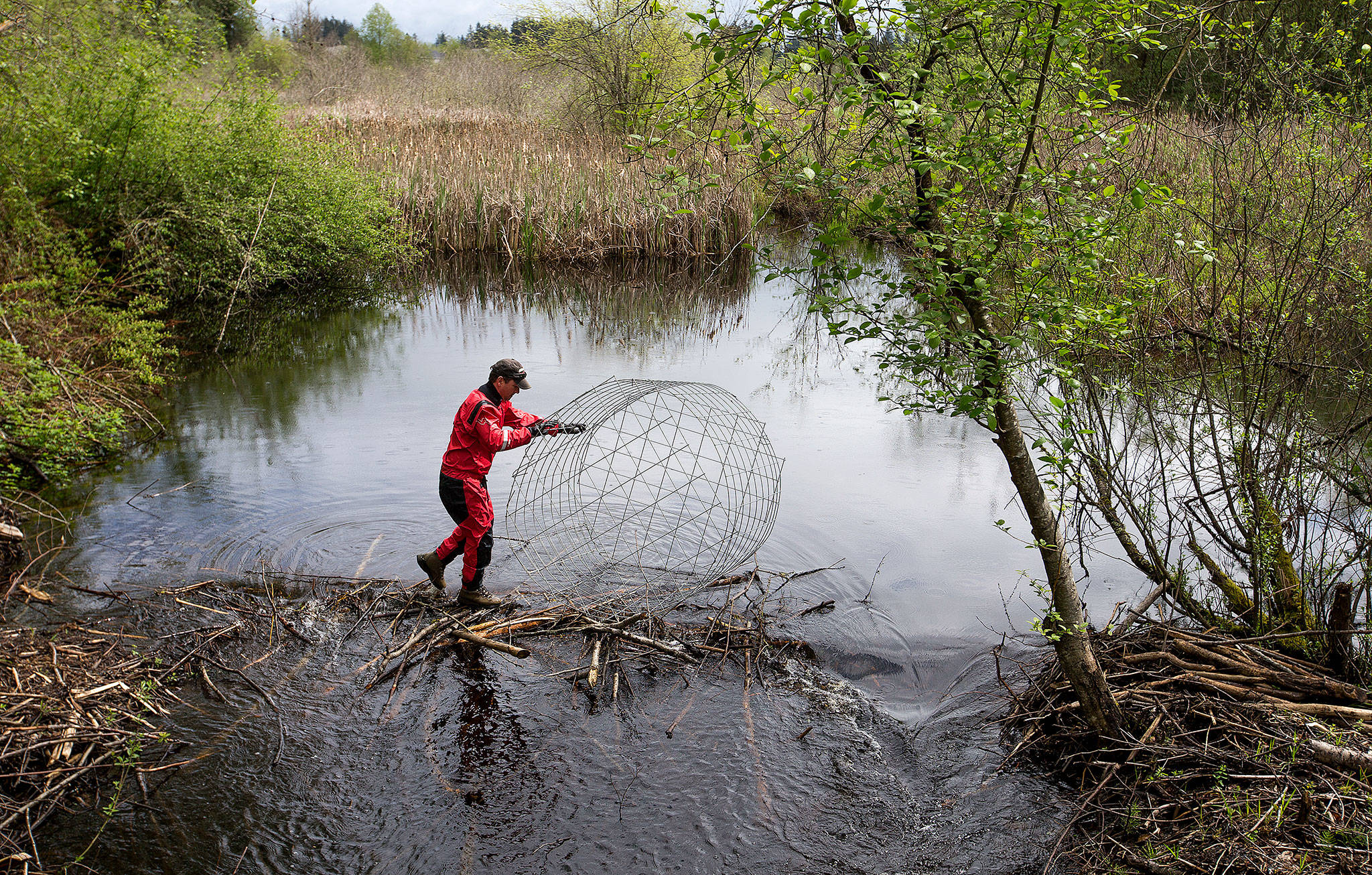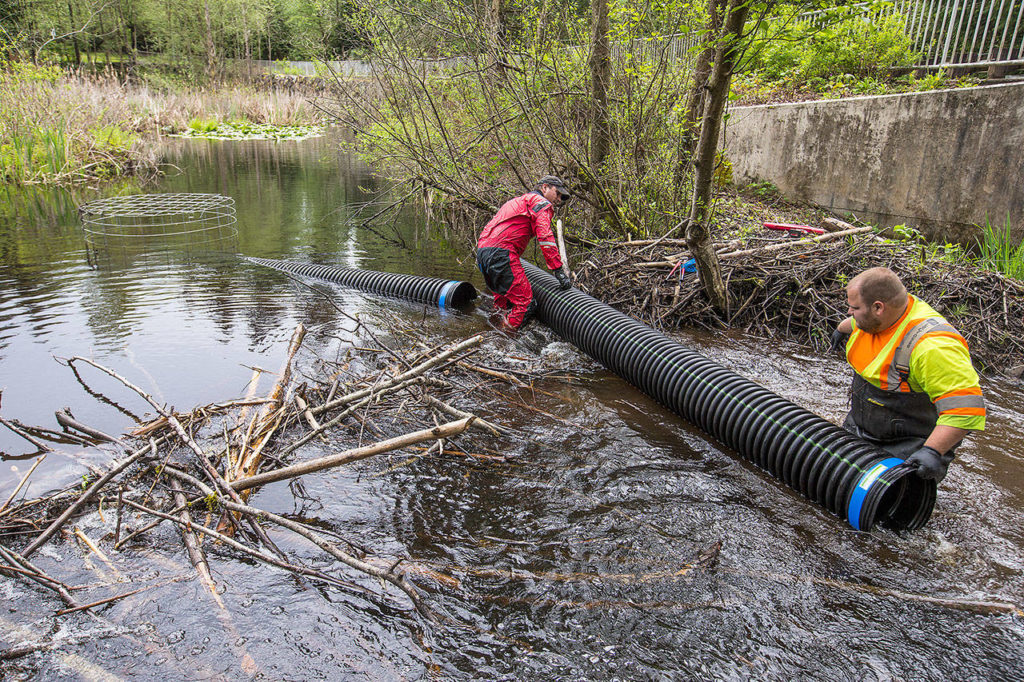MILL CREEK — The city of Mill Creek hopes a simple device called a “beaver deceiver” can help keep 35th Avenue Southeast above water after heavy rains.
While the road was built in a low-lying and marshy area, beaver dams on nearby Penny Creek have added to the problem, city officials say.
“Every time we have a major rain, we have to shut down 35th” near 144th Street Southeast, said Marci Chew, Mill Creek’s stormwater specialist.
At least twice a year, the street is flooded, sending vehicles on a detour through winding roads lined with homes. City workers have been monitoring the beavers and this stretch of Penny Creek since 2013.
Tearing down a beaver dam doesn’t do much good. The hard-working animals quickly repair the structure, which they rely on to create an environment that is safe and has plenty of food. And the dams play a critical role in creating happy homes for other animals and plants.
So, Mill Creek is trying to trick the Penny Creek beavers into thinking their dam is in tip-top shape, when it really has a pipe running through it to prevent flooding on 35th. To fool the beavers, the opening of the 18-inch-wide, plastic pipe is about 10 feet away from the dam and has a metal wire cage around it. The pipe passes through the sticks, logs, rocks, mud and other material that make up the dam, and ends a few feet away.
The device, also called an automatic leveler, lowers the water level when it climbs following a heavy rain. It does not drain the wetland, explained Mike Rustay, co-founder of the nonprofit Beavers Northwest. His day job, though, is an ecologist for Snohomish County.
Rustay installed the leveler for Mill Creek.
“We want to give them as much water as we can, so they don’t go downstream” and build another dam, he said.
Beavers do not give up easily.
“We had them chew through a pipe one time. They stuffed it with sticks until they were coming out the bottom” of the pipe, he said.
The animals build dams to create slow-moving wetlands. That allows them to build dens with underwater entrances and to reach food from the safety of the water. It also creates safe homes for salmon and other fish.
Tens of millions of beavers once lived in North America, and many animals came to depend on the wetlands created by the large rodents. They were almost hunted to extinction by the late 19th century, when settlers spread out through Western Washington. Many areas that once had been beaver wetlands were drained and turned into meadows and other settings.
“We built roads through really flat areas that 200 years ago would have been beaver habitat,” Rustay said.
Beavers and people can often live side by side. Levelers are a great solution if flooding is a problem, he said.
When Mill Creek decided to do something on Penny Creek, it contacted the Snohomish Conservation District, which connected the city with Beavers Northwest.
Rustay’s nonprofit has worked with the Tulalip Tribes to use beavers to restore salmon habitat.
Researchers from the National Oceanic and Atmospheric Administration and the University of Washington found in 2004 that any effort to bring back coho salmon to rivers here “will have limited success” if it does not involve beavers.
Beaver dams keep ponds and wetlands from disappearing during Western Washington’s drier summer months, Rustay said.
The animals “promote all sort of different plants, birds and other animals,” he said.
In addition to the leveler, Mill Creek is raising 35th Avenue Southeast. The city plans to drive piles under the roadway in mid-2018. The project is expected to cost $5.3 million and to go out to bid later this year.
Dan Catchpole: 425-339-3454; dcatchpole@heraldnet.com; Twitter: @dcatchpole.
Have a beaver problem?
Contact Snohomish Conservation District at 425-335-5634 or outreach@snohomishcd.org.
Talk to us
> Give us your news tips.
> Send us a letter to the editor.
> More Herald contact information.



























